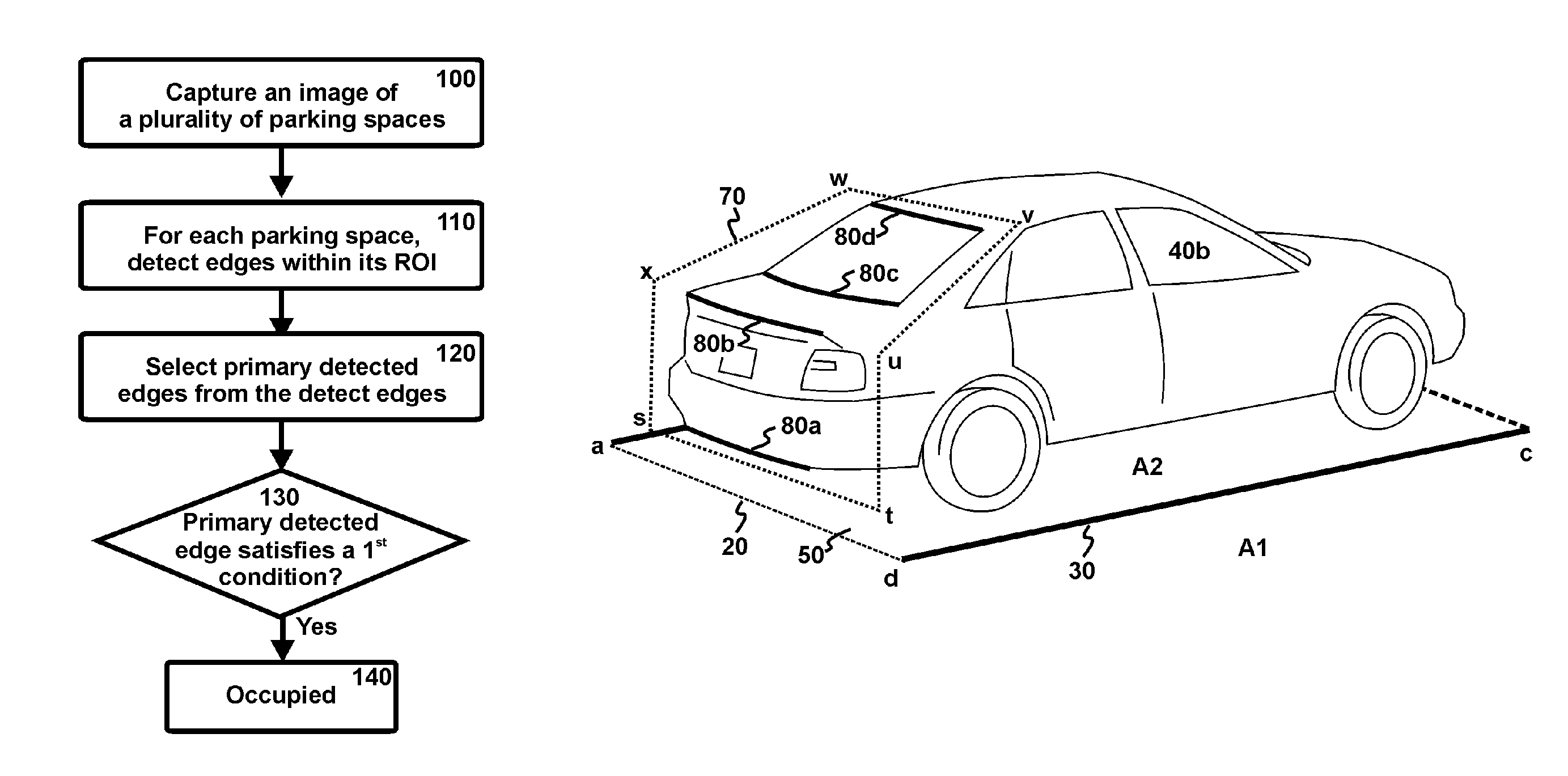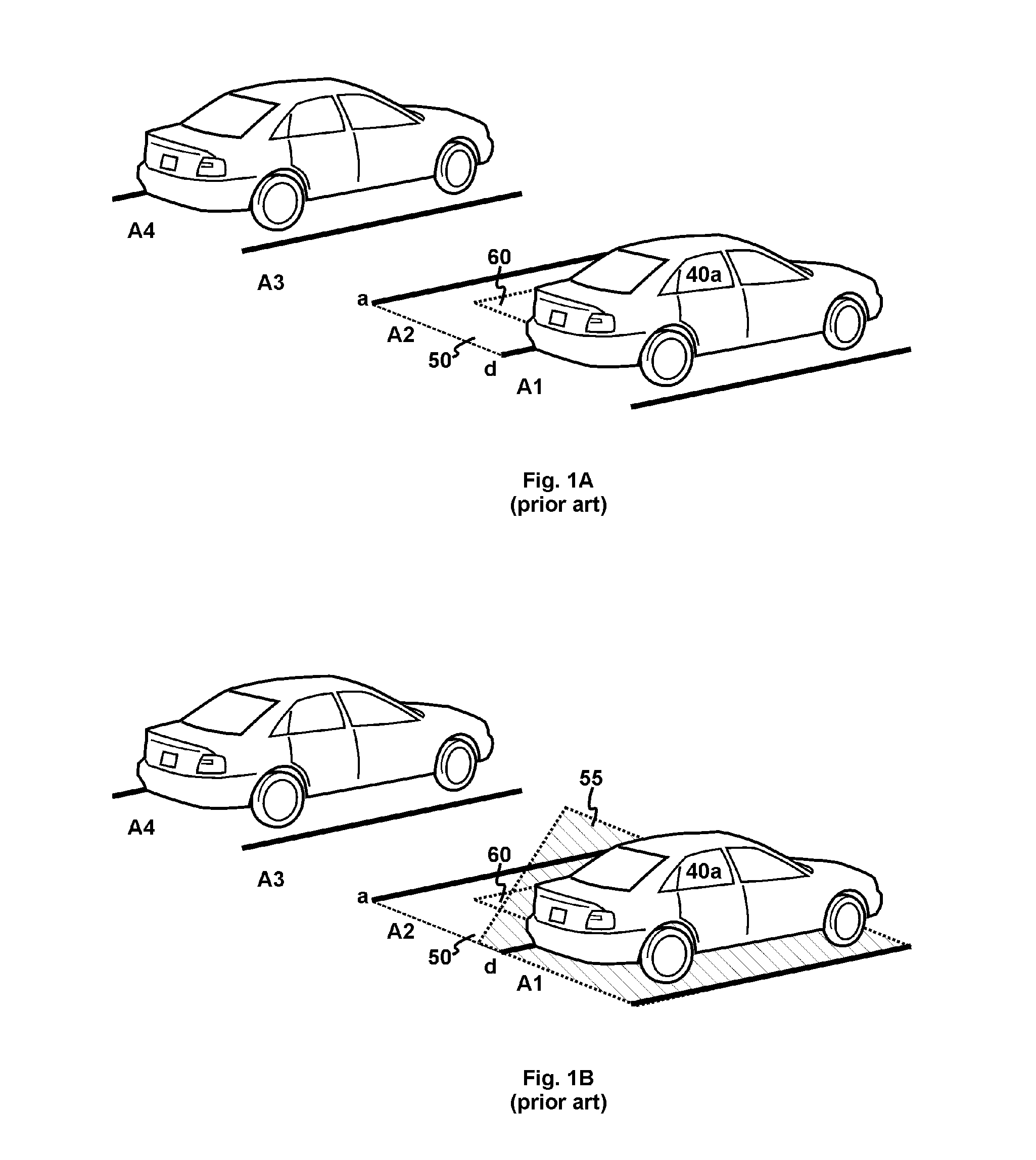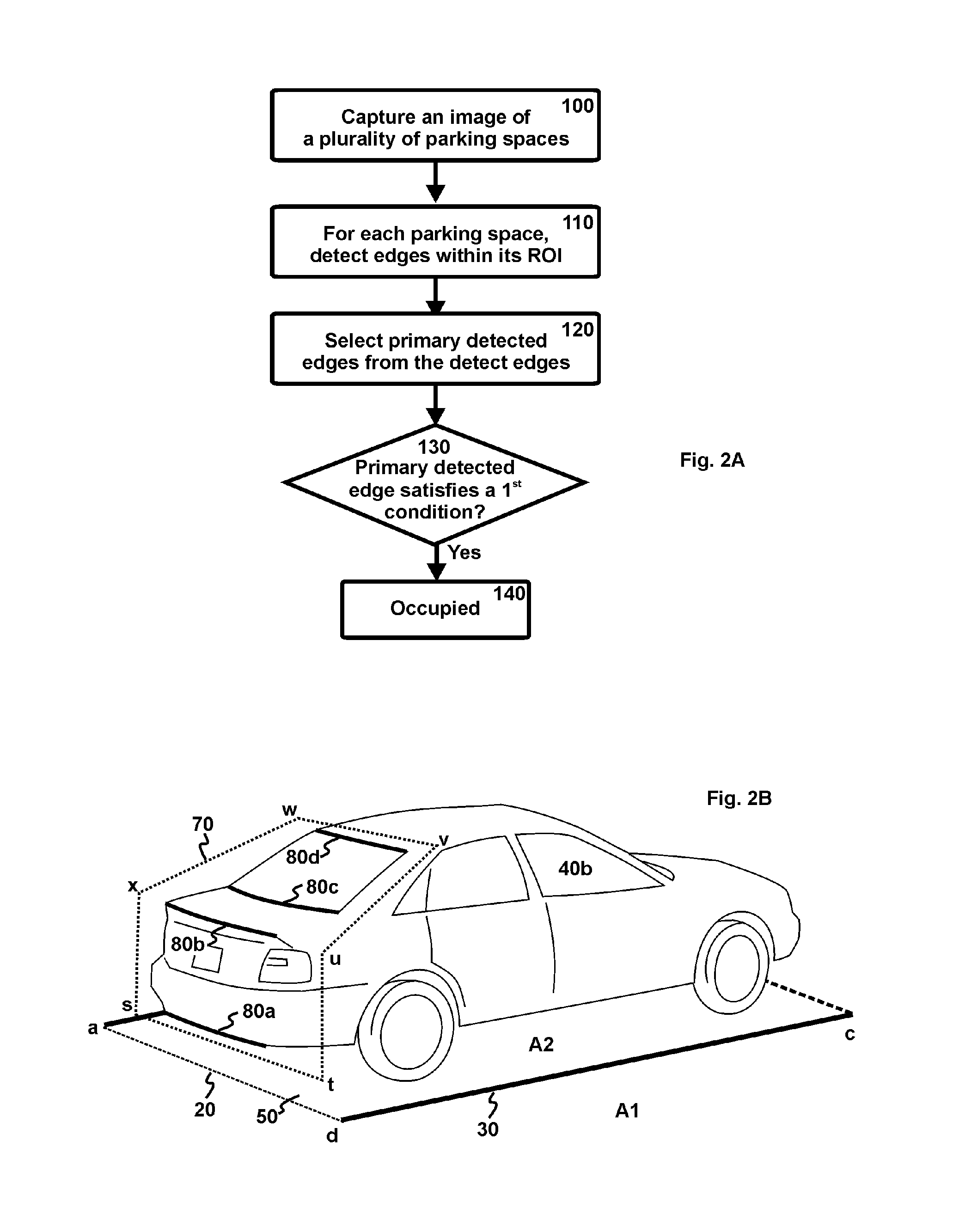Parked vehicle detection based on edge detection
- Summary
- Abstract
- Description
- Claims
- Application Information
AI Technical Summary
Benefits of technology
Problems solved by technology
Method used
Image
Examples
Embodiment Construction
[0024]Those of ordinary skills in the art will realize that the following description of the present invention is illustrative only and is not intended to be in any way limiting. Other embodiments of the invention will readily suggest themselves to such skilled persons from an examination of the within disclosure.
[0025]Referring now to FIGS. 2A-2B, FIG. 2A discloses a flow chart showing preferred steps to detect a parking space A2 which is occupied by a vehicle 40b; FIG. 2B illustrates the primary detected edges 80a-80d within its ROI 70. In this example, the vehicles (40b . . . ) parked in the parking spaces A1-A4 are parked in parallel, i.e. side-by-side parking.
[0026]During parking detection, a parking-monitoring camera captures an image of a parking area including a plurality of parking spaces A1, A2 (step 100). In the image 50 of each parking space (e.g. A2), its boundary comprises an exposed edge 20 (line “ad”) and at least a secondary edge 30 (line “cd”). The exposed edge 20 ...
PUM
 Login to View More
Login to View More Abstract
Description
Claims
Application Information
 Login to View More
Login to View More - R&D
- Intellectual Property
- Life Sciences
- Materials
- Tech Scout
- Unparalleled Data Quality
- Higher Quality Content
- 60% Fewer Hallucinations
Browse by: Latest US Patents, China's latest patents, Technical Efficacy Thesaurus, Application Domain, Technology Topic, Popular Technical Reports.
© 2025 PatSnap. All rights reserved.Legal|Privacy policy|Modern Slavery Act Transparency Statement|Sitemap|About US| Contact US: help@patsnap.com



